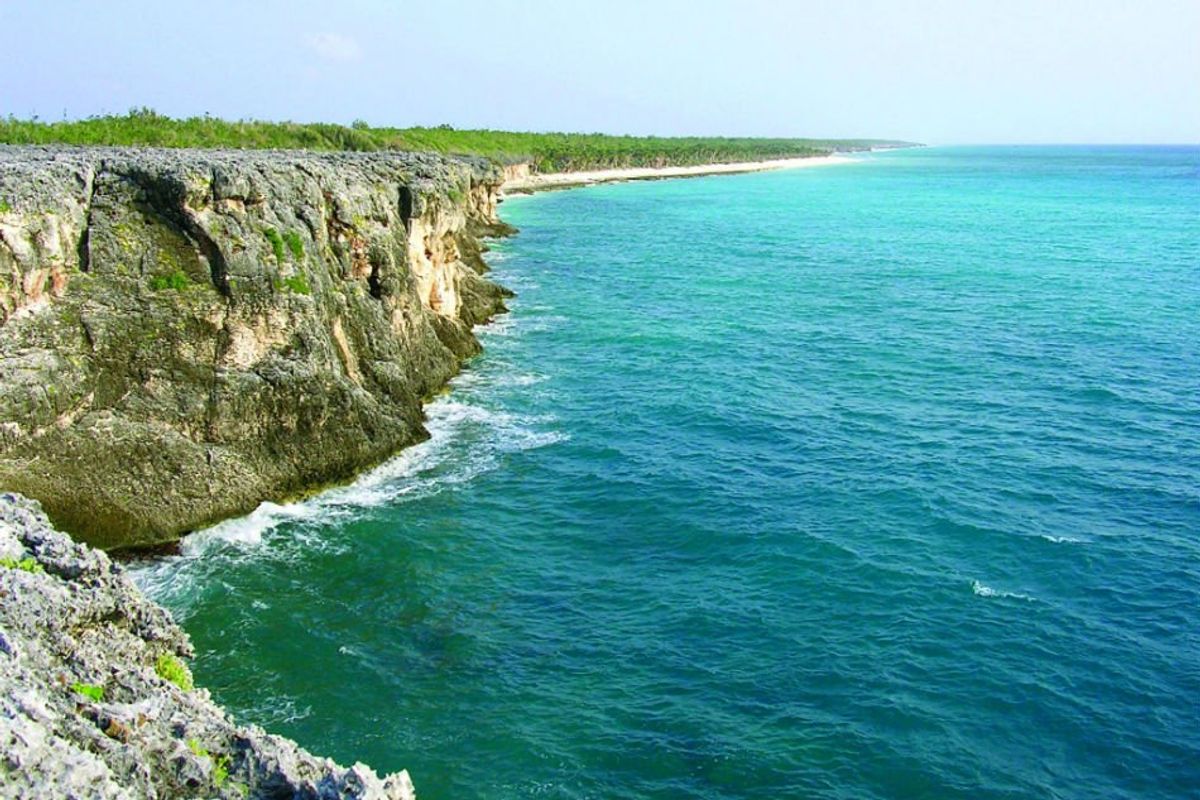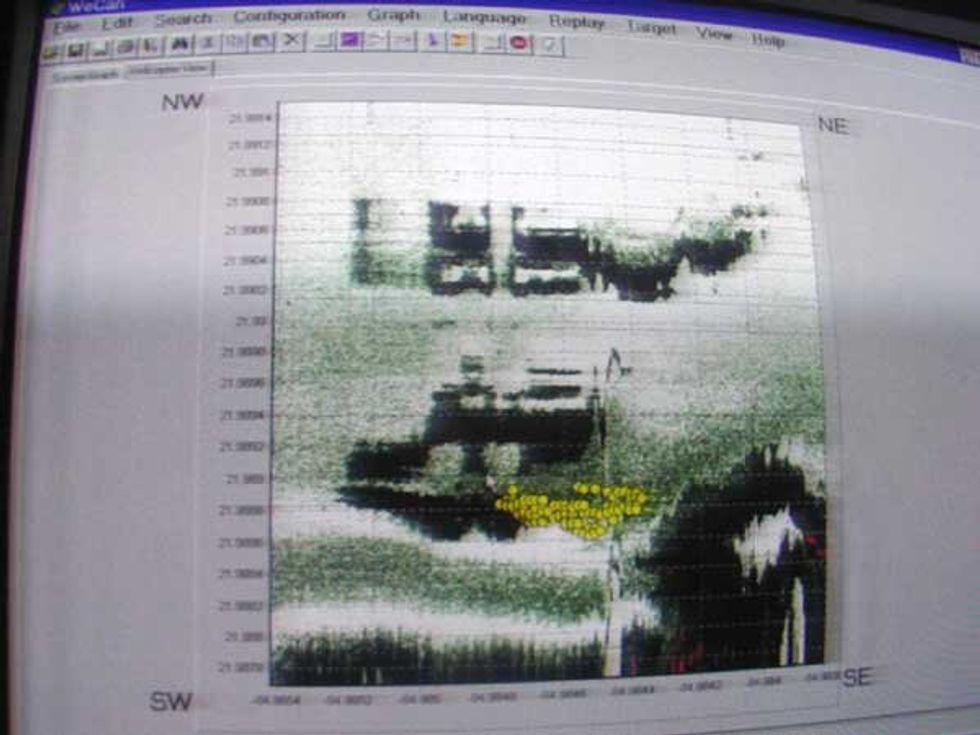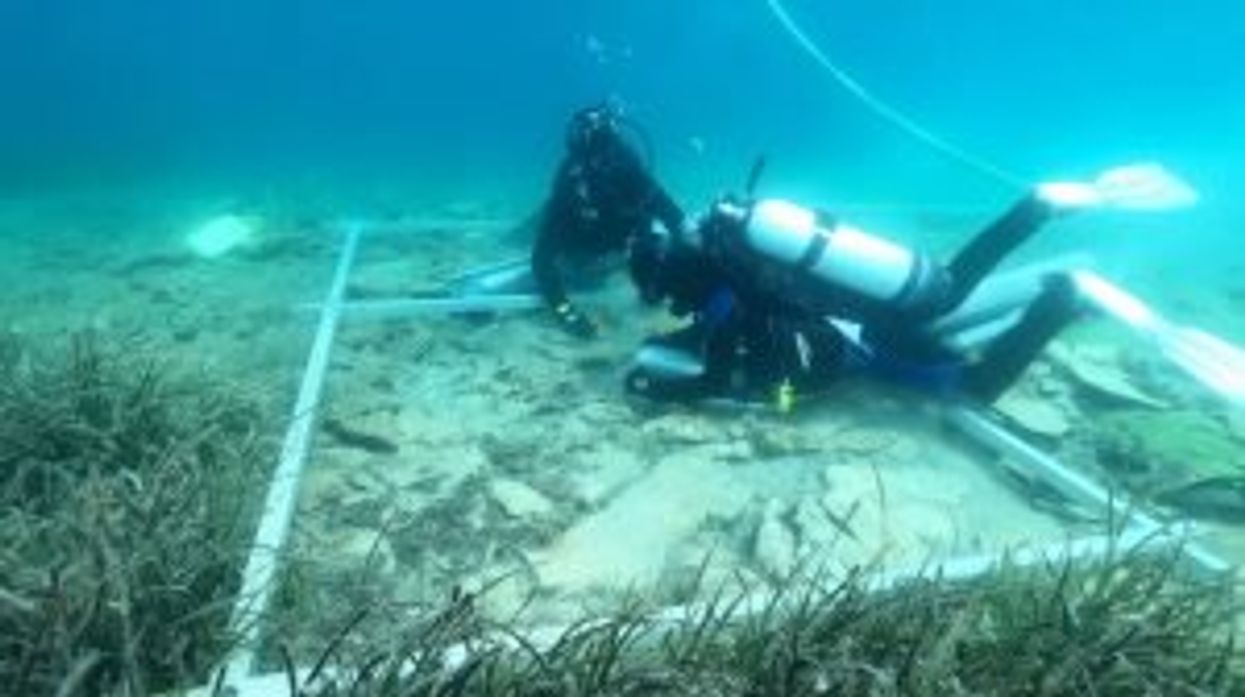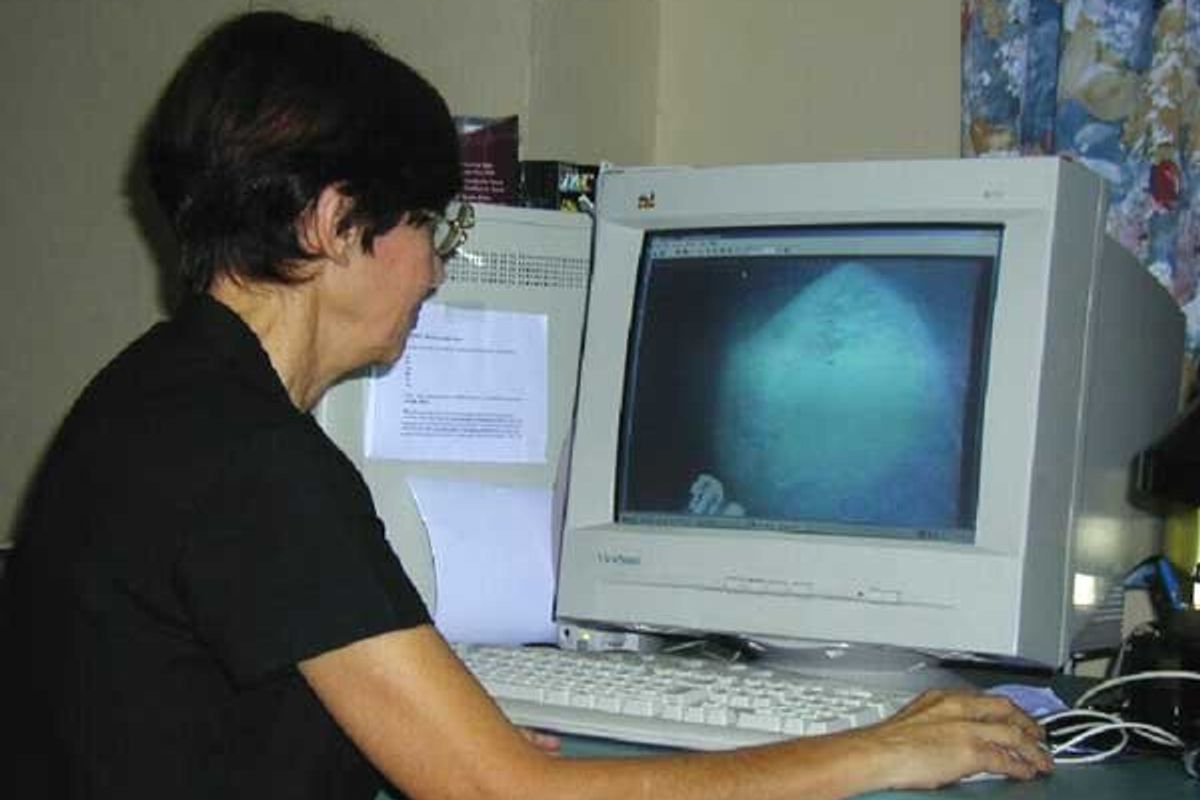Science & Tech
Harriet Brewis
Apr 21, 2024
Is this Atlantis? Archaeologists discover 6,000-year-old sunken settlement
ZMG - Buzz60 / VideoElephant
Nestled some 650 metres (2,000 feet) beneath the waves surrounding Cuba lies one of archaeology’s great unsolved mysteries.
In 2000, researchers from the Canadian company Advanced Digital Communications (ADC) were surveying the waters off the tip of the Guanahacabibes Peninsula, when their sonar equipment picked up a strange series of structures down on the ocean floor.
The images generated by the scanning equipment showed smooth symmetrically organised stones reminiscent of an urban development, BBC News reported at the time.
In July 2001, the ADC team – led by marine engineer Pauline Zelitsky and her husband Paul Weinzweig – returned to the site, this time with an explorative robot device capable of conducting advanced underwater filming.
The images captured by this robot confirmed the presence of smooth blocks with the appearance of cut granite – some of which measured eight by 10 feet (2.43 by three metres) – as well as other geometric shapes.
Some of the stones appeared deliberately stacked on top of one another like pyramids, while others were circular.

Zelitsky, Weinzweig and their colleagues deduced that these formations could have been built more than 6,000 years ago – predating Egypt’s great pyramids by 1,500 years.
They suggested that the buildings would have been constructed on dry land before being drowned out by the sea, possibly sunk by volcanic activity in the area.
“The structures we found on the side scan sonar simply are not explicable from a geological point of view,” Weinzweig told the South Florida Sun-Sentinel back in 2002.
“There is too much organization, too much symmetry, too much repetition of form.”
And yet, his wife was quick to insist that more research was needed before firm conclusions could be drawn.
"It's a really wonderful structure which really looks like it could have been a large urban centre," Zelitsky told the Reuters news agency at the time.
"However, it would be totally irresponsible to say what it was before we have evidence."

And so more evidence was sought by experts including geologist Manuel Iturralde, then a senior researcher at Cuba's Natural History Museum.
Iturralde, who has studied countless underwater formations admitted: “These are extremely peculiar structures, and they have captured our imagination.”
He also noted that volcanic rocks recovered at the site strongly suggested that the undersea plain was once above water, the Washington Post reported in 2002.
The marine geologist said the existence of these rocks was difficult to explain, especially because there are no volcanoes in Cuba.
And yet, he also conceded: “Nature is much richer than we think.”
Iturralde pointed out that the depths at which the structures were found posed problems for the “lost city” theory.
He estimated that at the maximum velocity of Earth’s tectonic movements, it would have taken 50,000 years for ruins to sink 650 metres underwater.
Yet, he stressed: "50,000 years ago there wasn't the architectural capacity in any of the cultures we know of to build complex buildings."
Michael Faught, a specialist in underwater archaeology at Florida State University, shared similar doubts with the South Florida Sun-Sentinel.
He told the paper: "It would be cool if [Zelitsky and Weinzweig] were right, but it would be real [sic] advanced for anything we would see in the New World for that time frame. The structures are out of time and out of place."
And yet, news of the discovery soon sparked a flood of excitement, with commentators suggesting this could be the remains of none other than the fabled continent of Atlantis.
Still, Zelitsky was quick to pour water on this idea, stressing that Atlantis is pure myth, insisting: “What we have found is more likely remnants of a local culture."
She suggested that it may have once been located on a 100-mile "land bridge" that joined Mexico's Yucatan Peninsula with Cuba, Ancient Origins reports.
Meanwhile, Iturralde highlighted local legends told by the Maya and native Yucatecos, telling of an island inhabited by their ancestors that vanished beneath the waves.
And yet, the depth of the discovery has continued to discredit such theories in many people’s eyes.
In 2012, Keith Fitzpatrick-Matthews, who runs the debunking website Bad Archaeology, pointed out that during the Pleistocene era, that lasted between 2.6 million and 11,700 years ago, sea levels dropped a maximum of about 100 metres (328 feet).
“At no point during the Ice Age would [the Cuban ruins] have been above sea level unless, of course, the land on which they stand has sunk,” Fitzpatrick-Matthews wrote.
“This is the claim made for Atlantis: according to Plato’s account, it was destroyed ‘by violent earthquakes and floods’.
“However, if we take Plato at his word [...] the violence of its sinking makes it improbable that an entire city could have survived plunging more than 600 [metres] into an abyss.”
Then, in 2016, a report published by researcher Brad Yoon on Ancient Origins, asked whether the Caribbean sea might once, during the time of modern man, have been a “dry basin” on which the city was built.
But, he concluded: “Having performed an exhaustive search on the topic, I couldn’t find a single source [...] that put forth such a hypothesis.”
He continued: “However implausible this hypothesis may be, if true, it would provide a simple and elegant solution to the problem discussed, namely how a city could have been built close to 700 metres (2,300 feet) below sea level today, or 580 metres (1,900 feet) below sea level even during the maximum drawdown of the world’s oceans.
“If the Caribbean Sea simply did not exist for an extended period of time in the human past, a reasonably advanced civilization inhabiting the area could have built cities on dry land thousands of feet below sea level, even over 10,000 feet below sea level.”
And yet, for all the interest and theorising at the time of the discovery, the true nature of the structures remains an enigma.
More than two decades since the ADC’s fateful uncovering of the stones, there has been a dearth of follow-up research into the “lost city”.
A number of planned expeditions to the site were cancelled owing to funding issues or blockades imposed by the Cuban government.
Ultimately, as is often the case, red tape and logistical challenges have stood in the way of any major breakthroughs here.
Still, the discovery is yet more proof that what we think we know about humanity's past must constantly be under review.
As Weinzweig put it in a 2002 interview with the Morien Institute: "We believe that much of the significant archaeology of the future will be discovered in the little-explored world’s oceans and will greatly expand our understanding of the enormous antiquity of human civilization.”
Sign up for our free Indy100 weekly newsletter
Have your say in our news democracy. Click the upvote icon at the top of the page to help raise this article through the indy100 rankings
Top 100
The Conversation (0)















